Redux is a state management library that makes state mutations predictable by implementing a single source of truth, ensuring state is read-only, and using pure functions for updates. It organizes data flow through actions and reducers, where actions are dispatched to update the application state contained in a store. Additionally, utilities like redux-actions and react-redux simplify action creation and connect state to UI components.
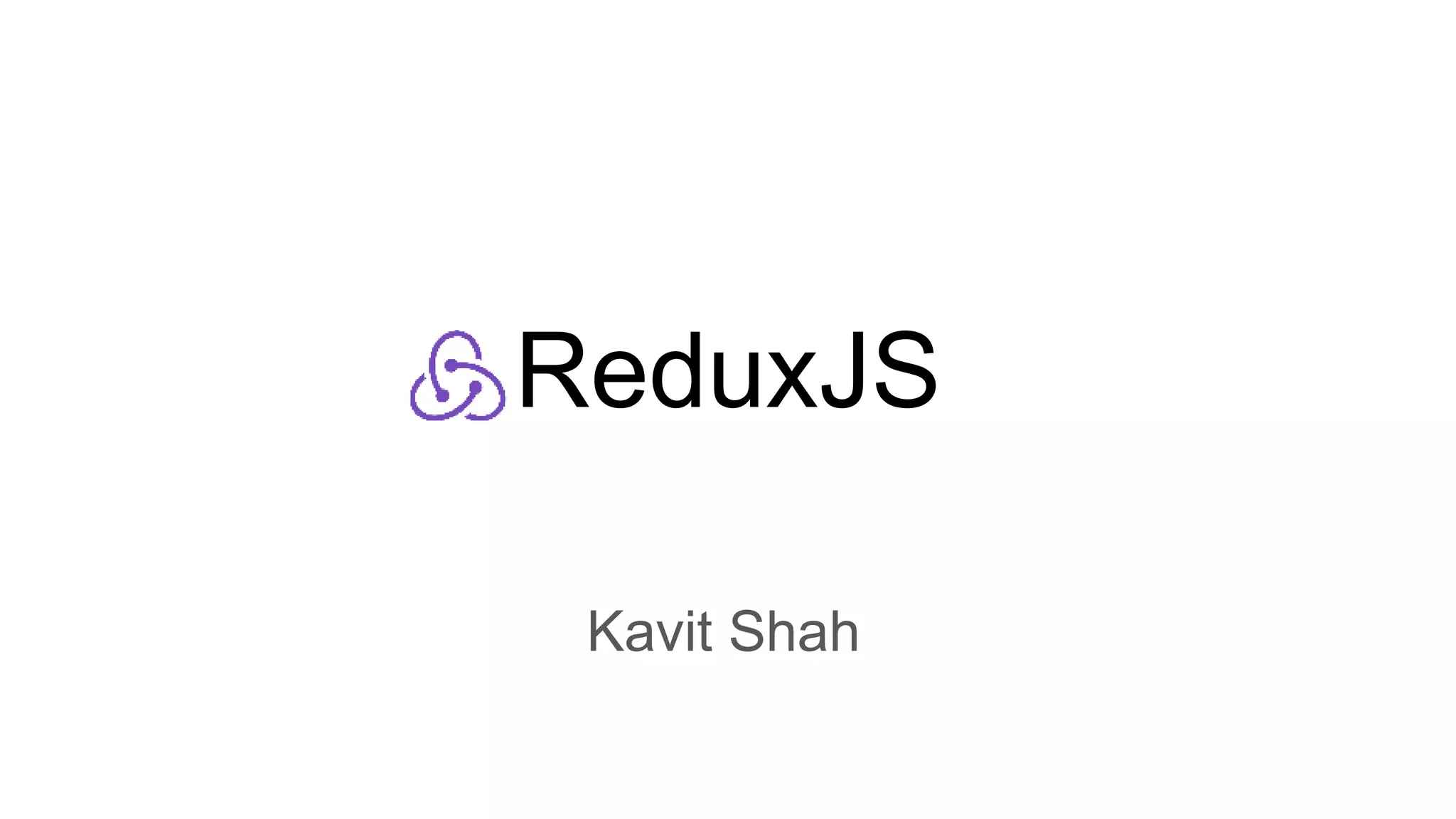
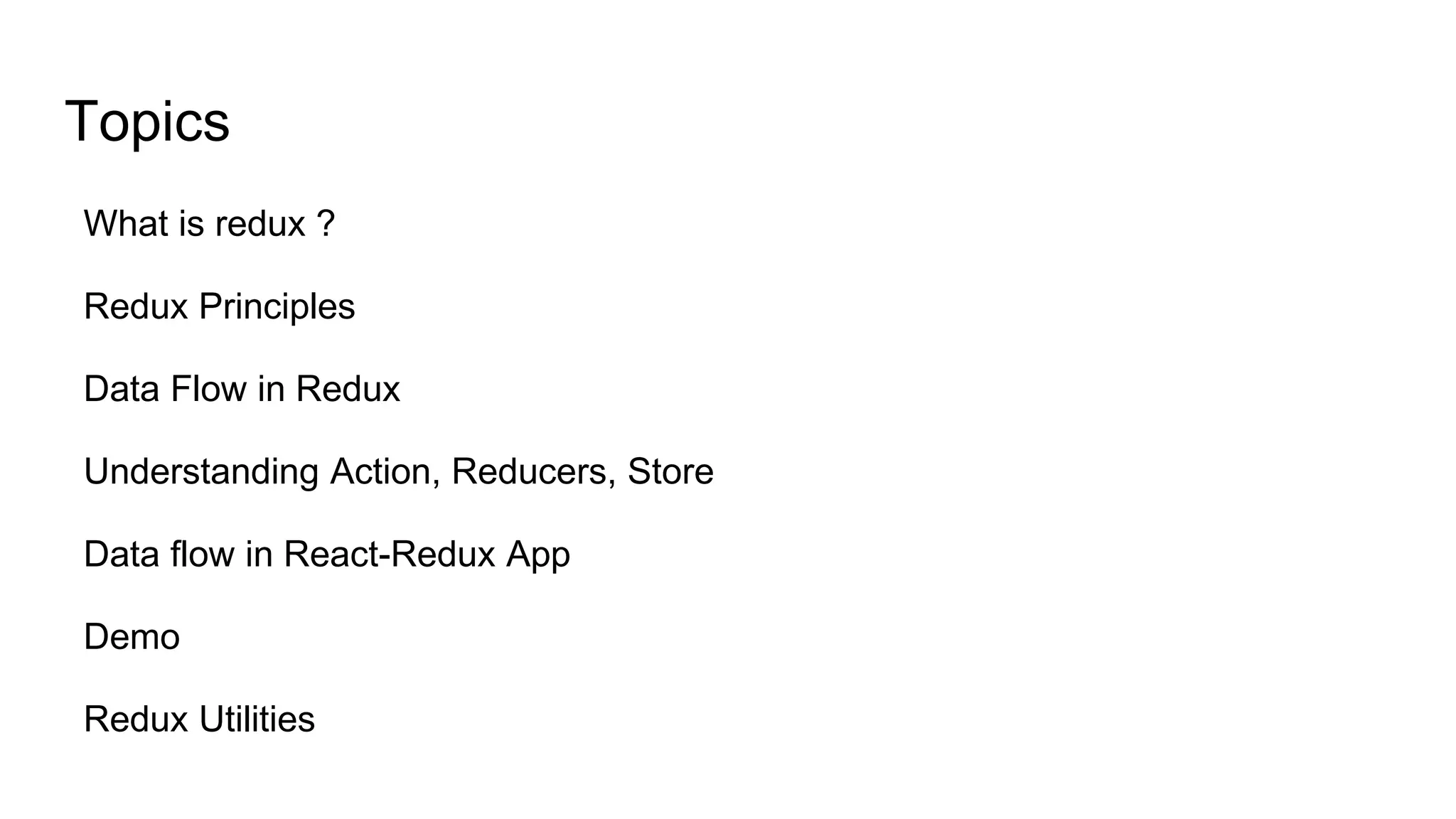
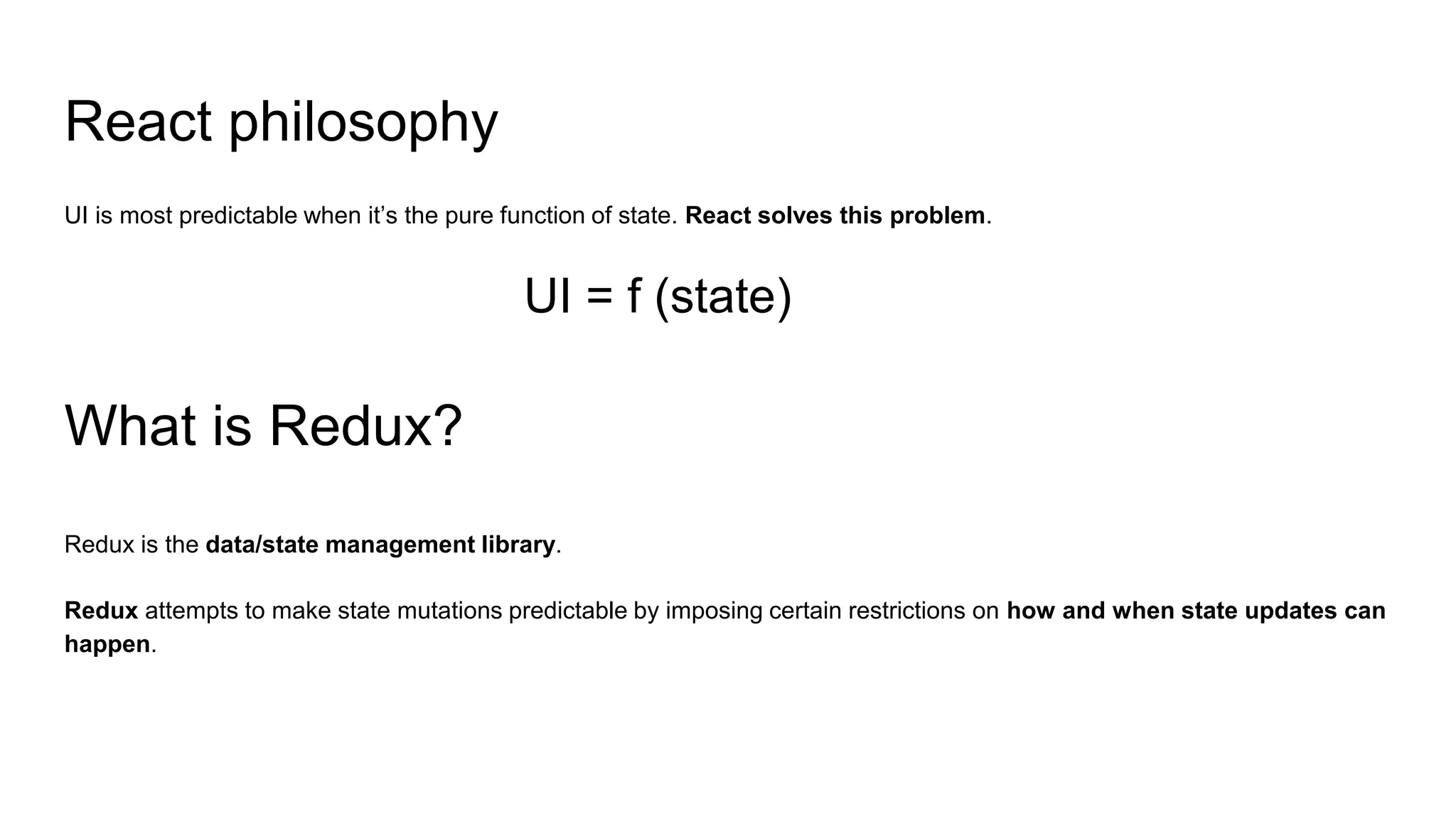
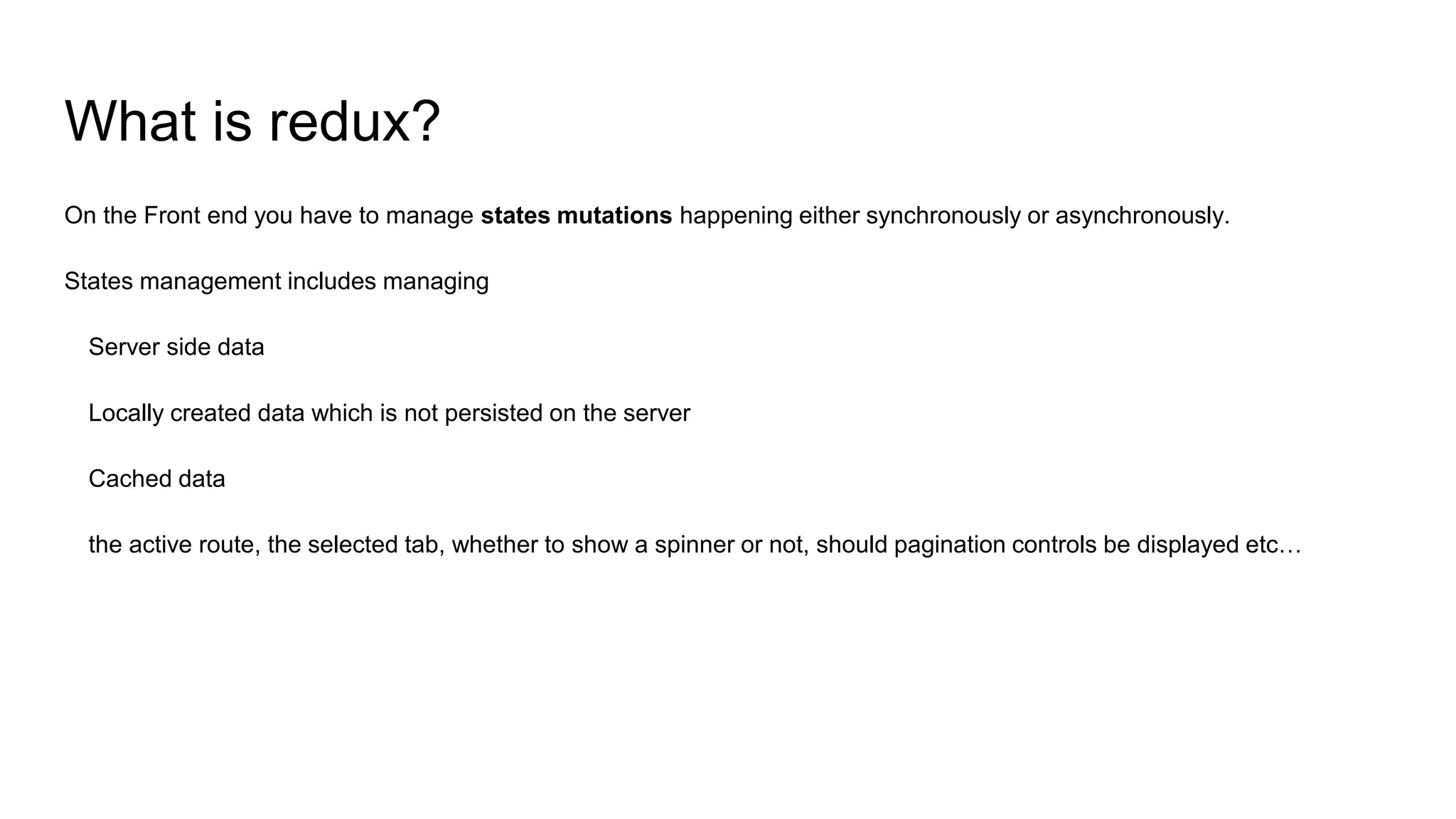
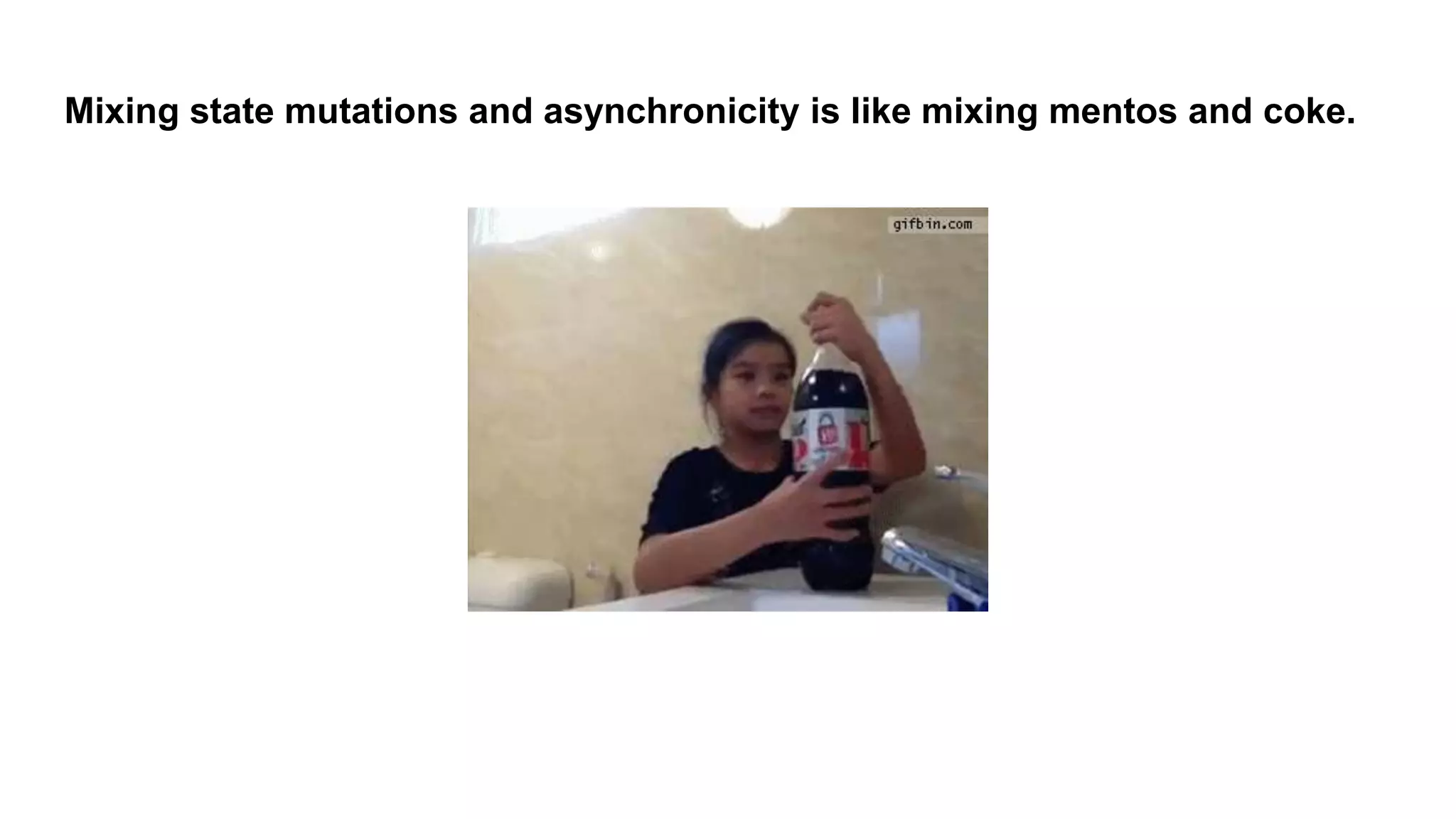
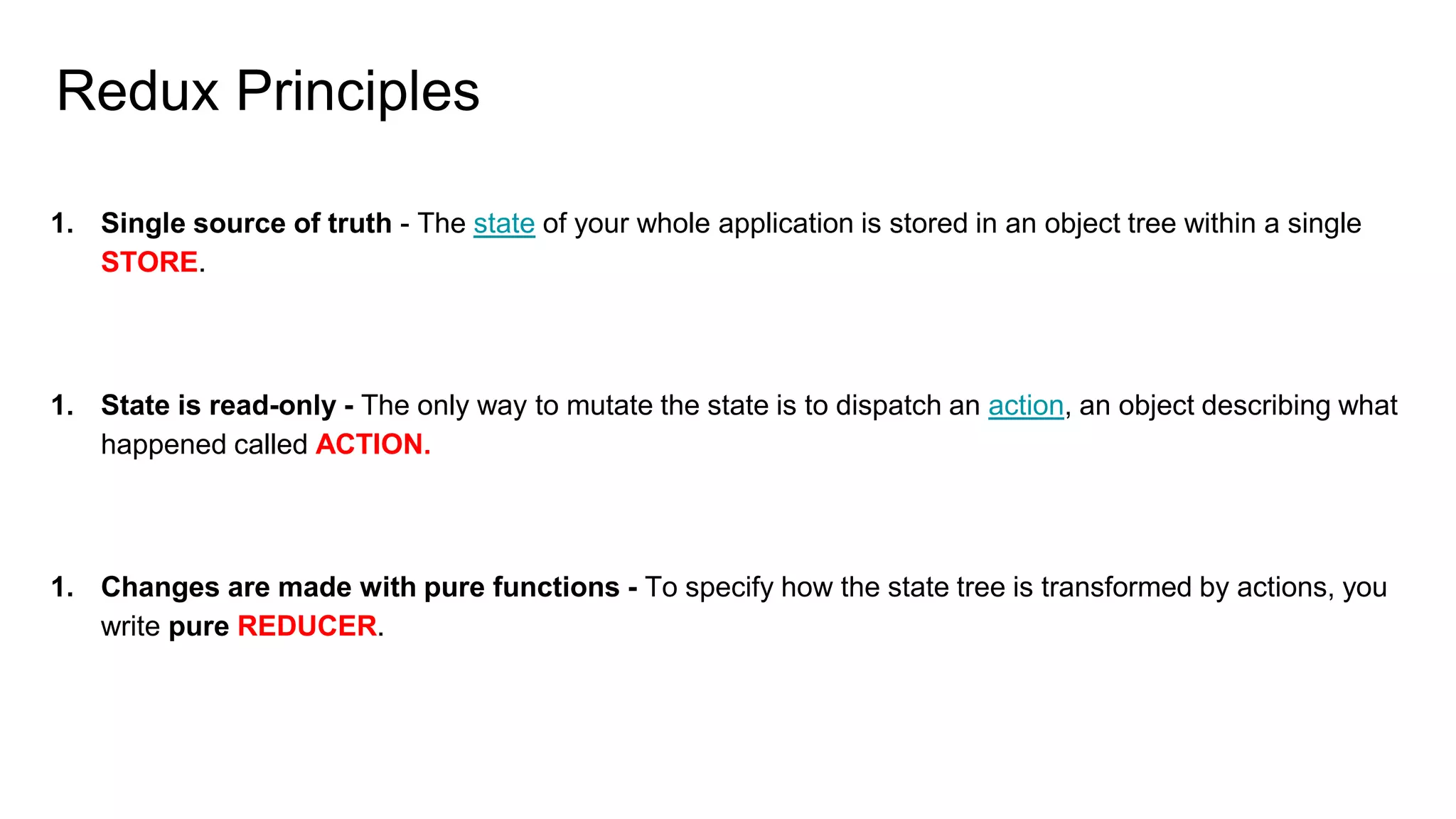
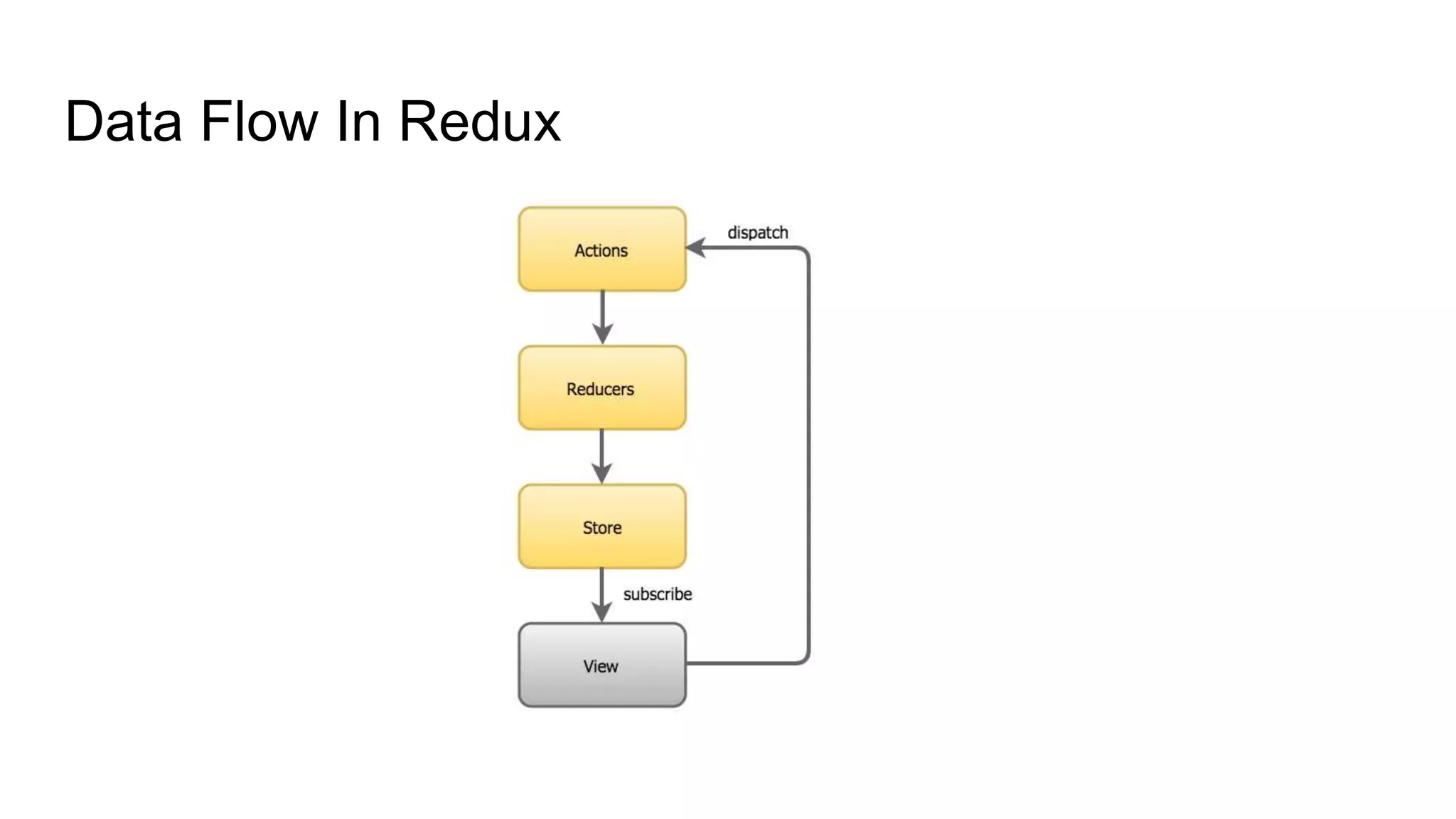
![State Tree For Simple Todo List
{
visibilityFilter: 'SHOW_ALL',
todos: [
{
id: 1,
text: 'Lets make G2M Awesome',
completed: false
},
...
]
}
Mapping between state tree and reducers](https://image.slidesharecdn.com/reduxjs-160729051924/75/Getting-started-with-Redux-js-8-2048.jpg)
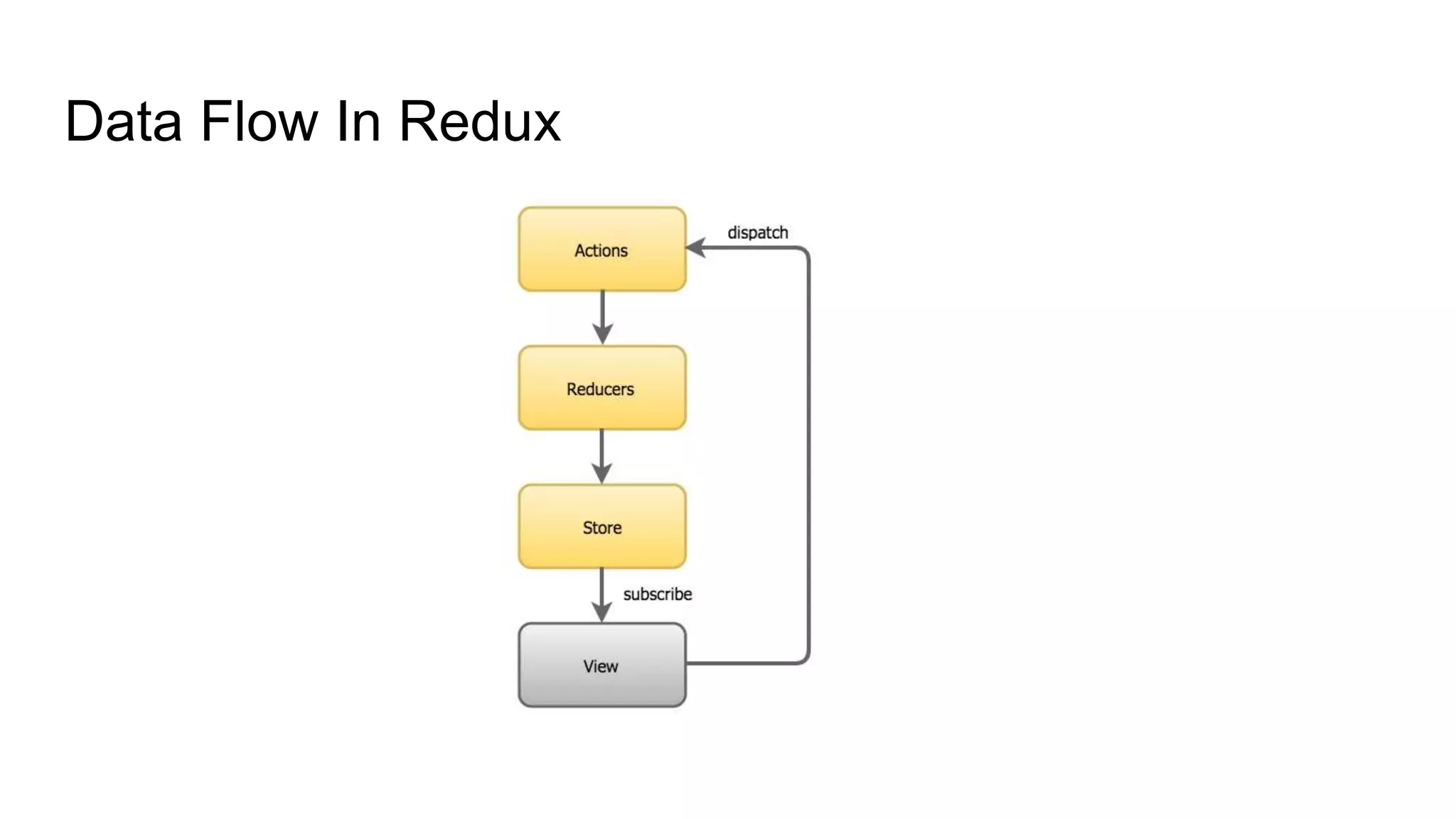
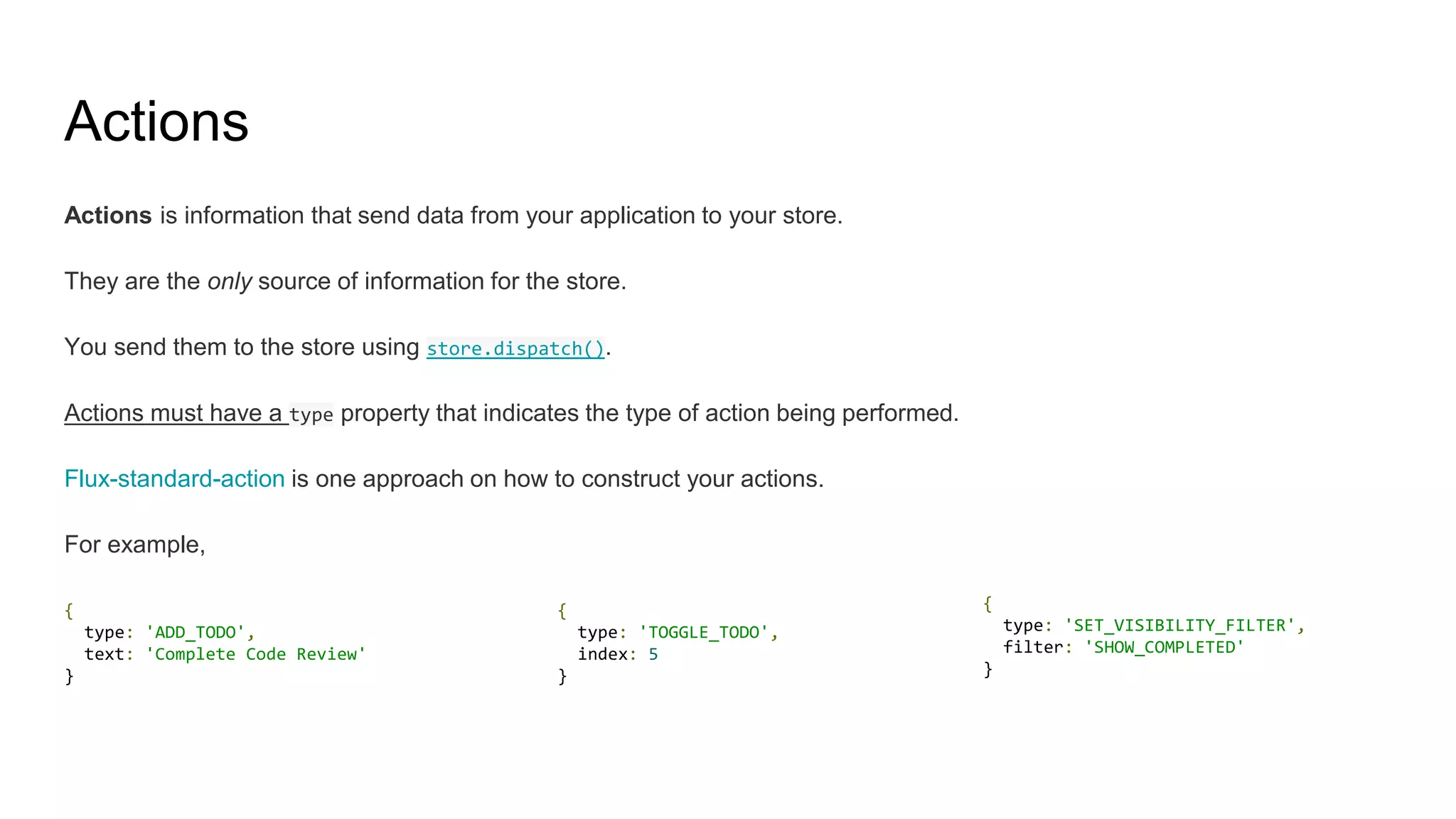
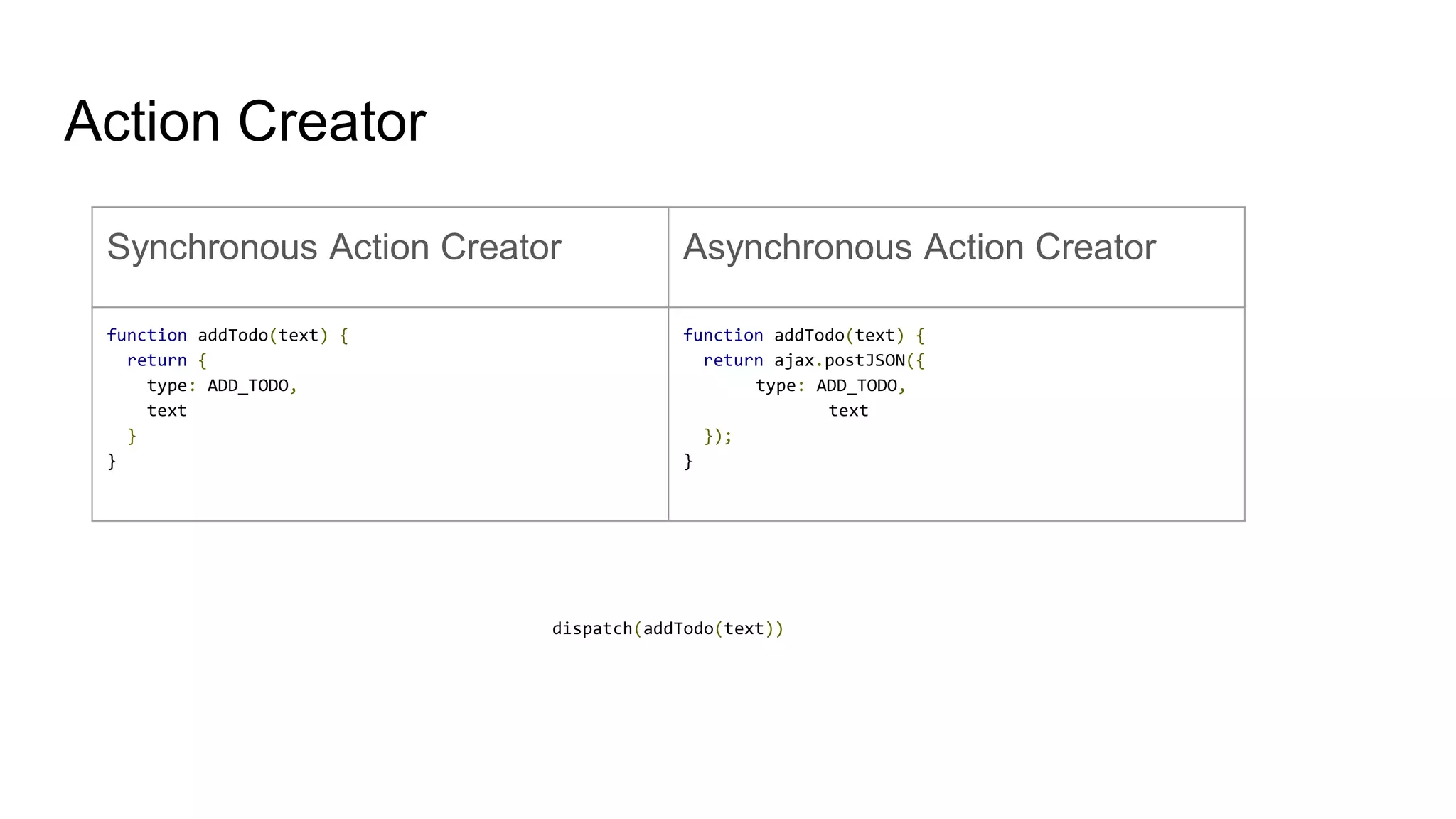
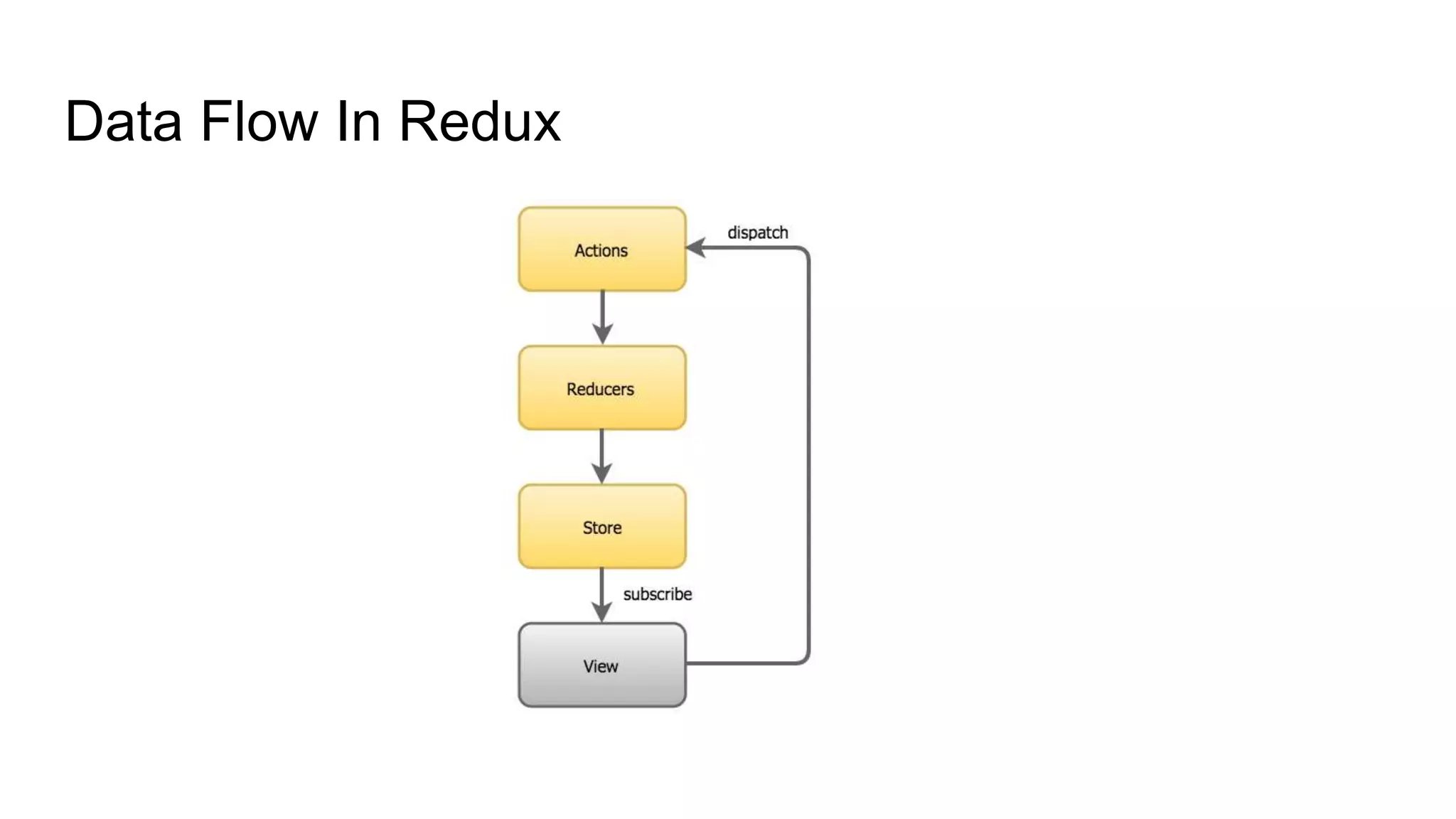
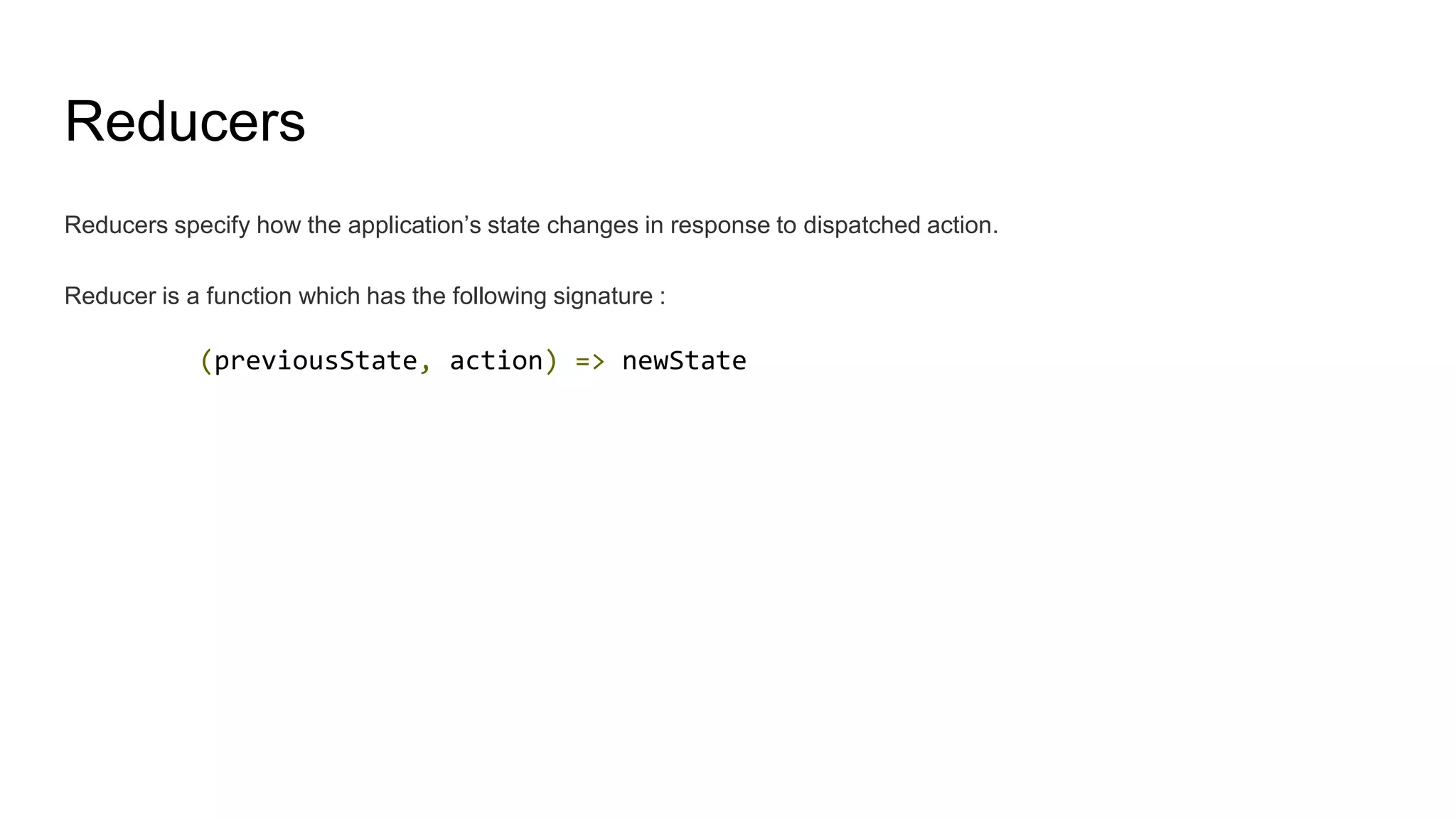
![Reducer Example
function todoApp(state = initialState, action) {
switch (action.type) {
case SET_VISIBILITY_FILTER:
return {
...state,
visibilityFilter: action.filter
}
case ADD_TODO:
return {
state, {
todos: [
...state.todos,
{
text: action.text,
completed: false
}
]
})
default:
return state
}
}
Things not to do inside reducers.
● Mutate the state.
● Perform side effects like API calls and routing
transitions;
● Call impure functions, e.g. Date.now() or
Math.random().
Note:
We always return the previous state for default case.](https://image.slidesharecdn.com/reduxjs-160729051924/75/Getting-started-with-Redux-js-14-2048.jpg)
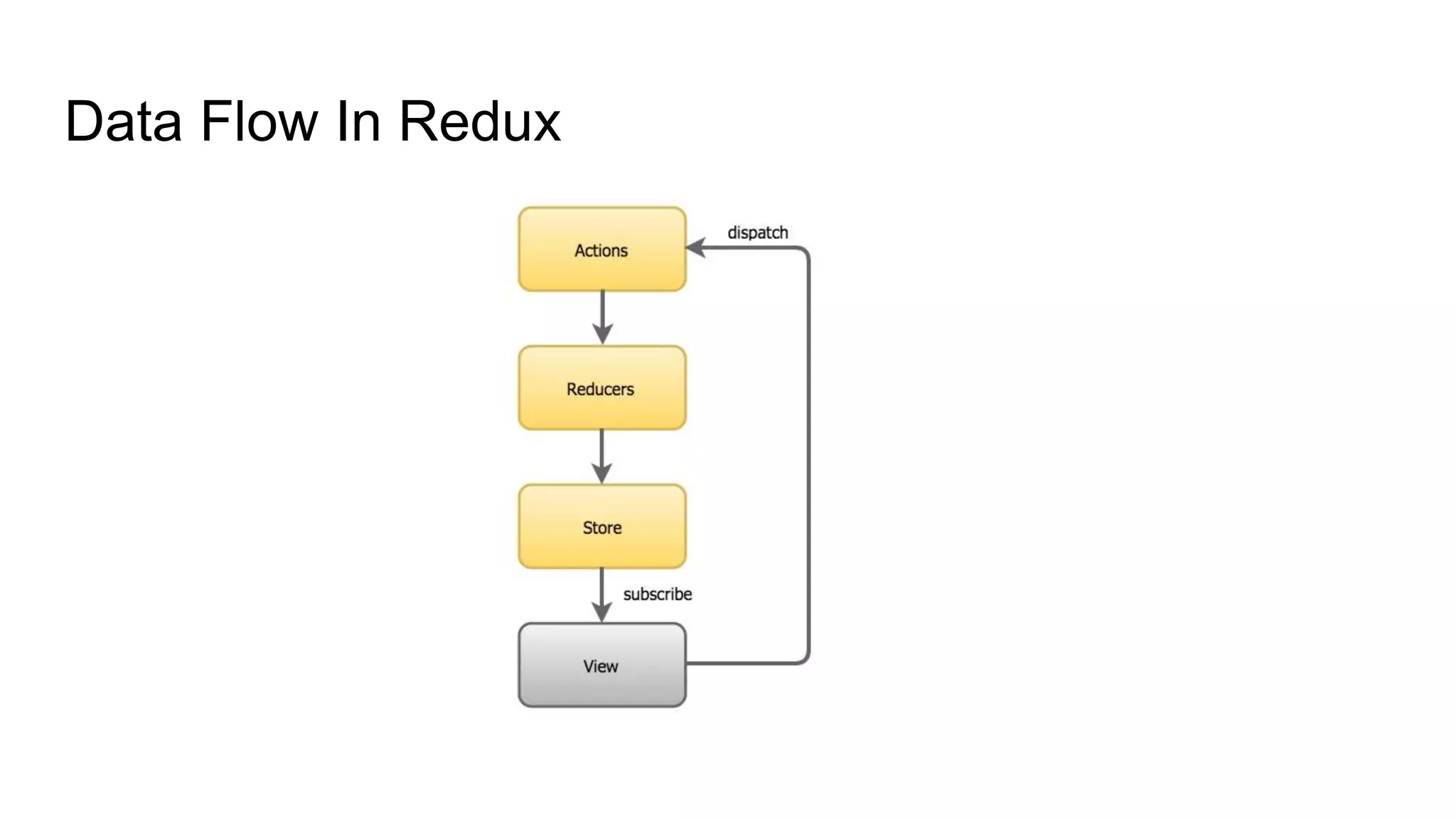
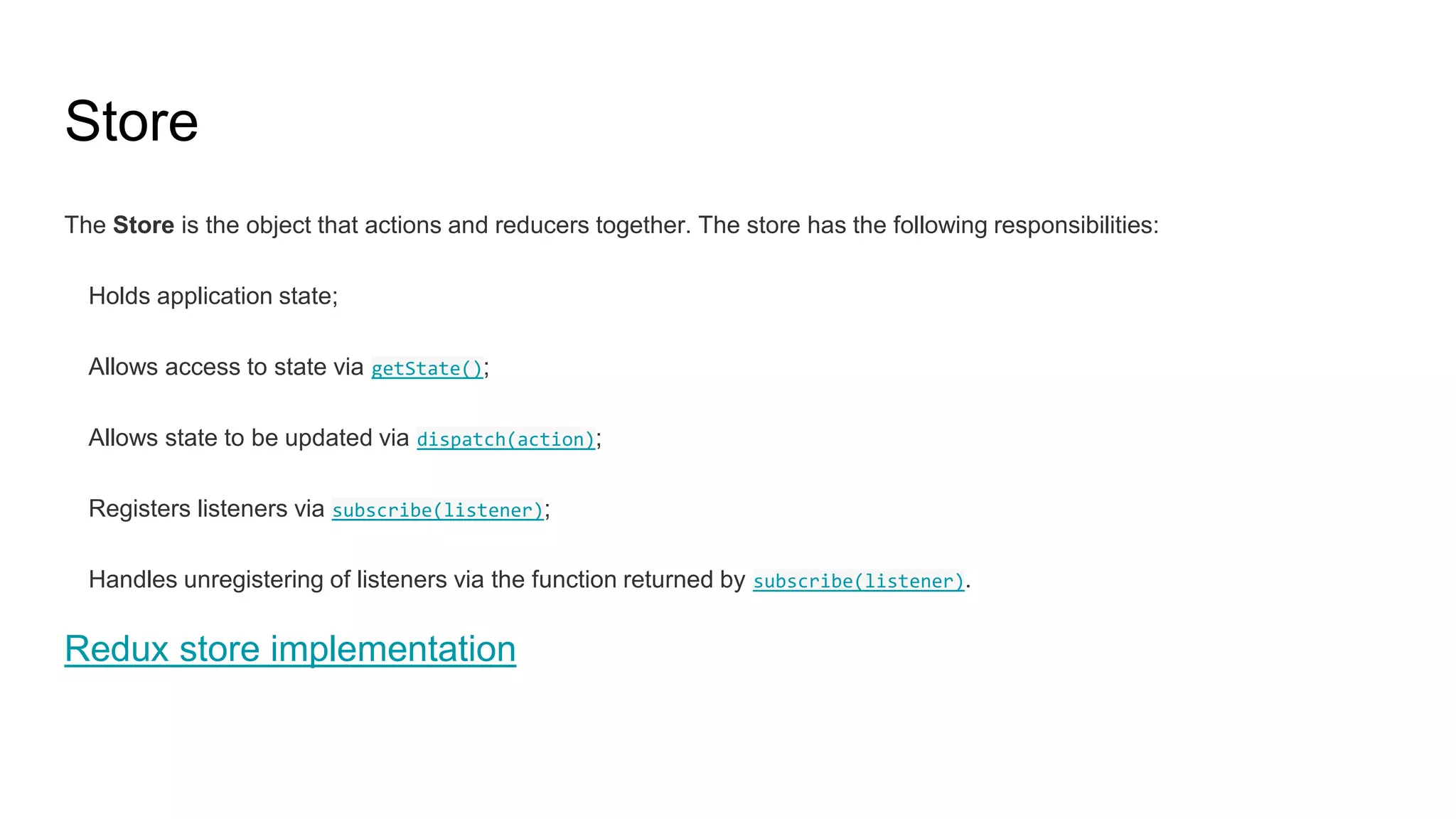
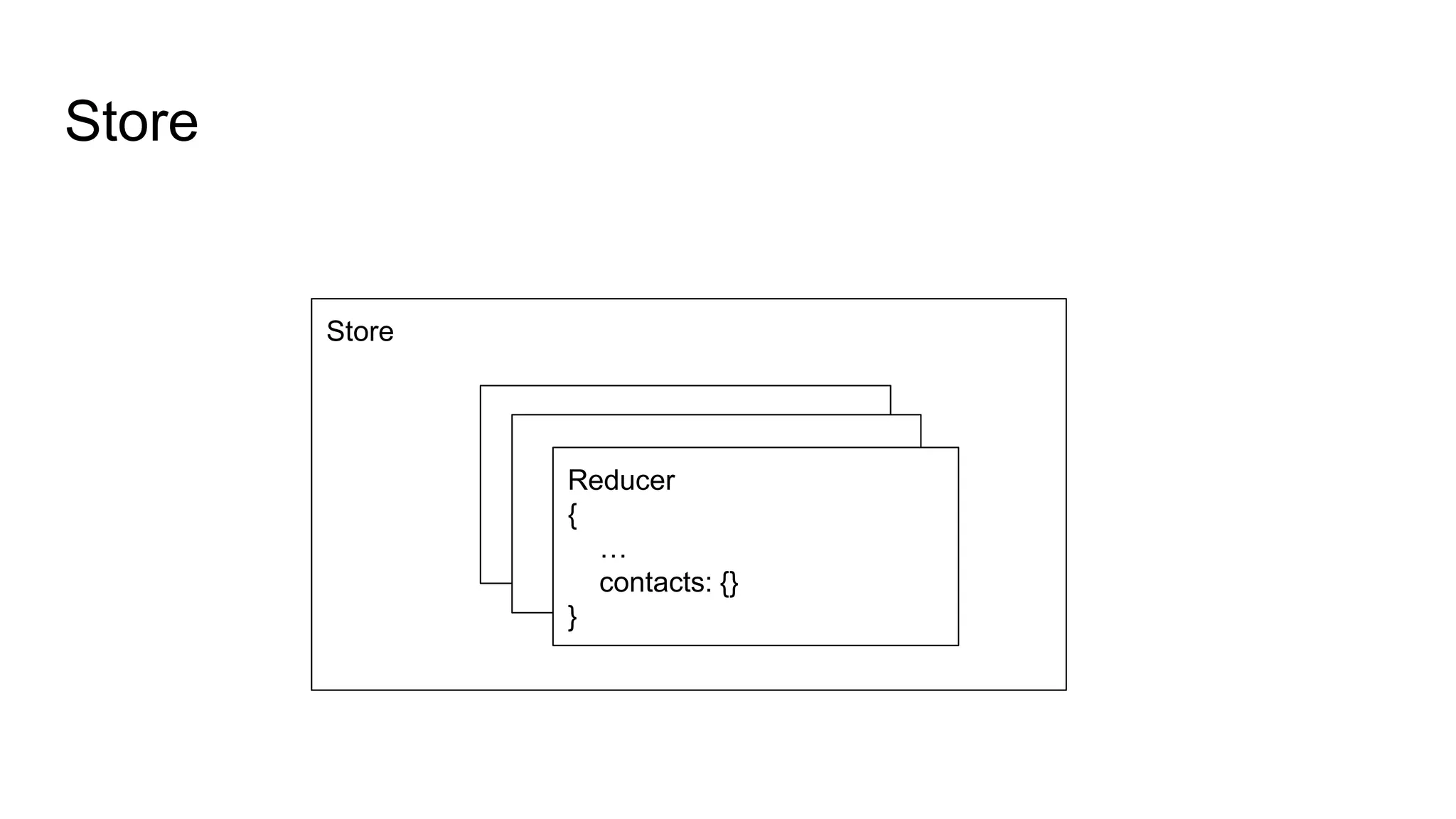
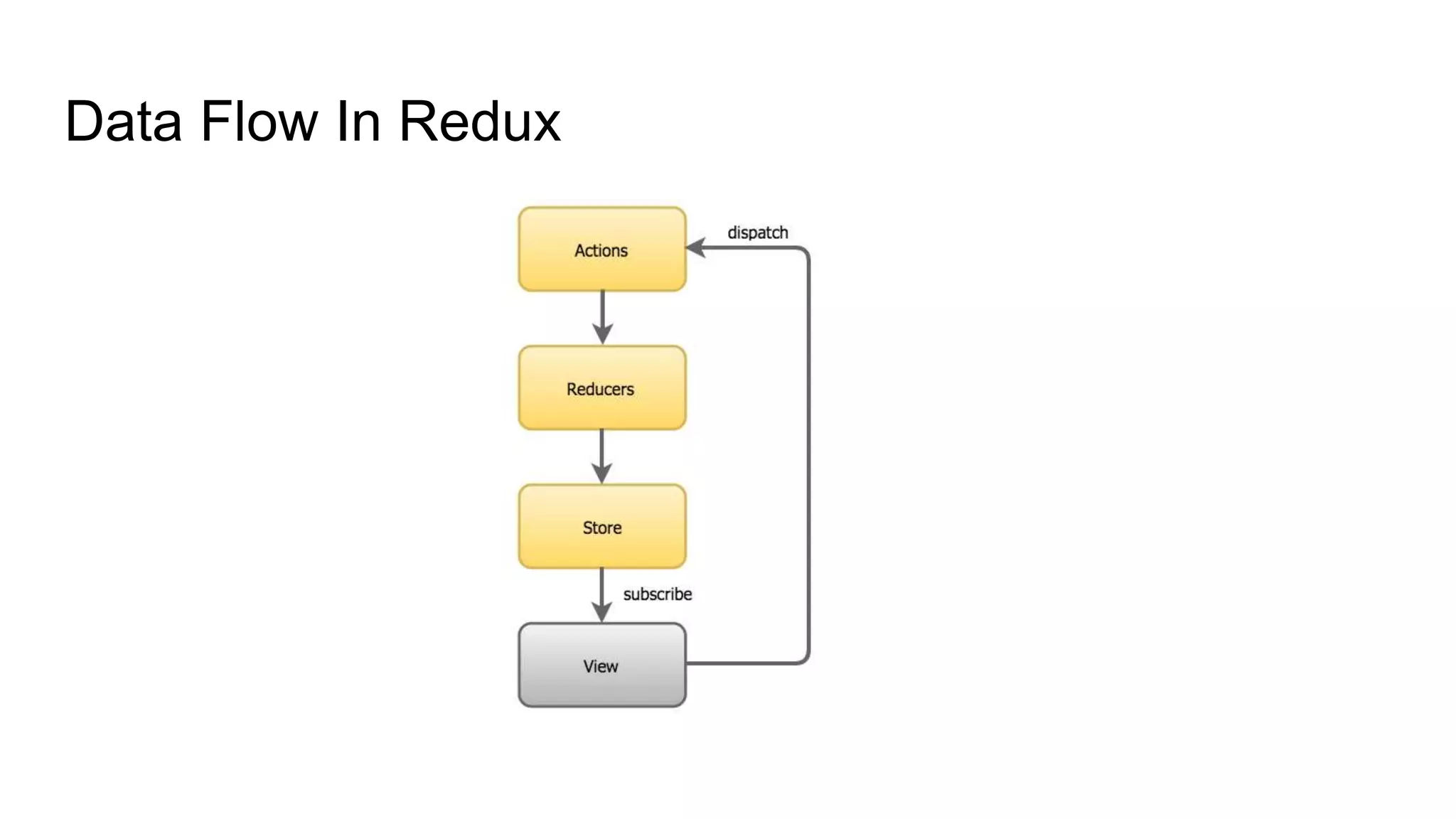
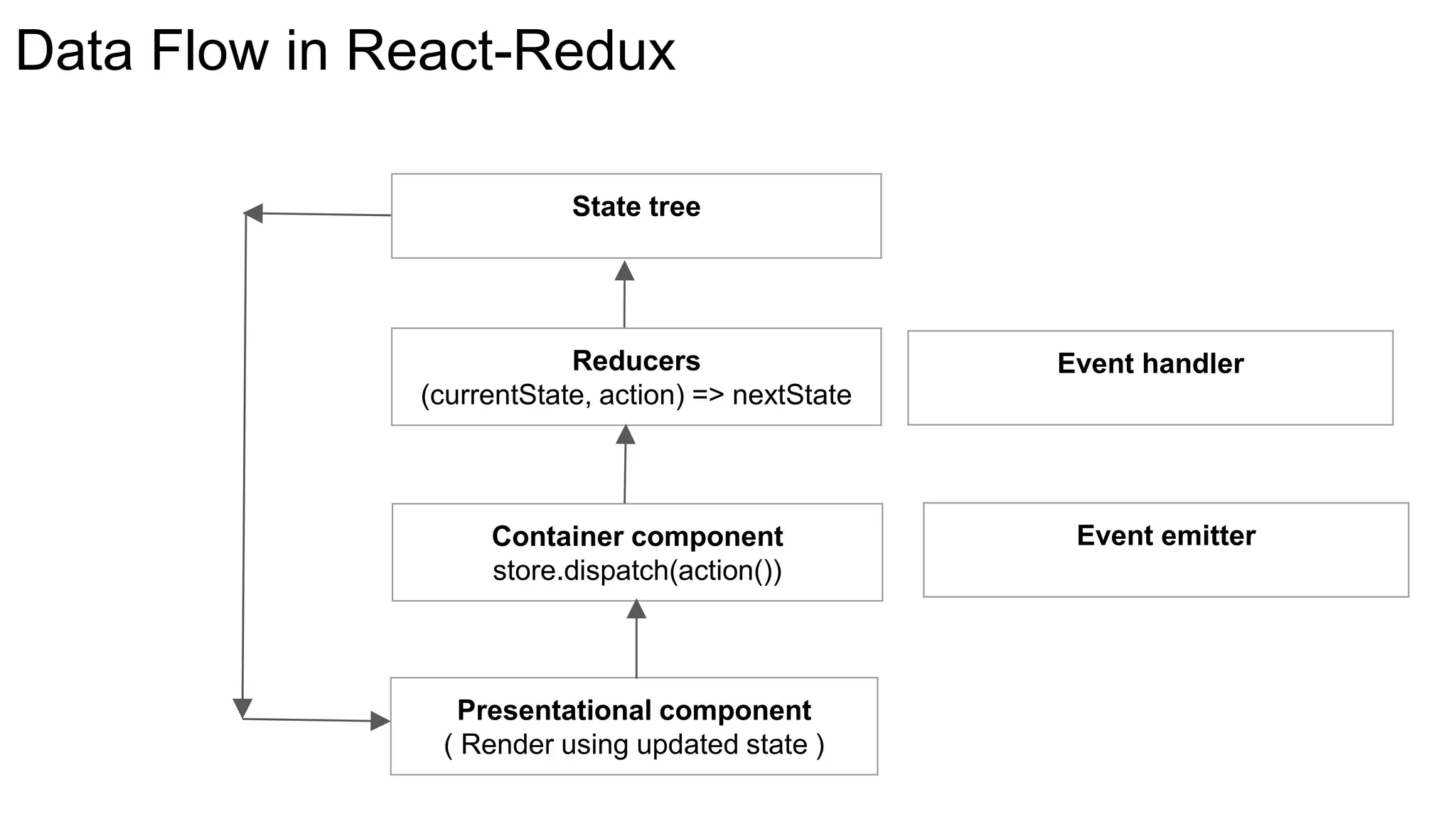
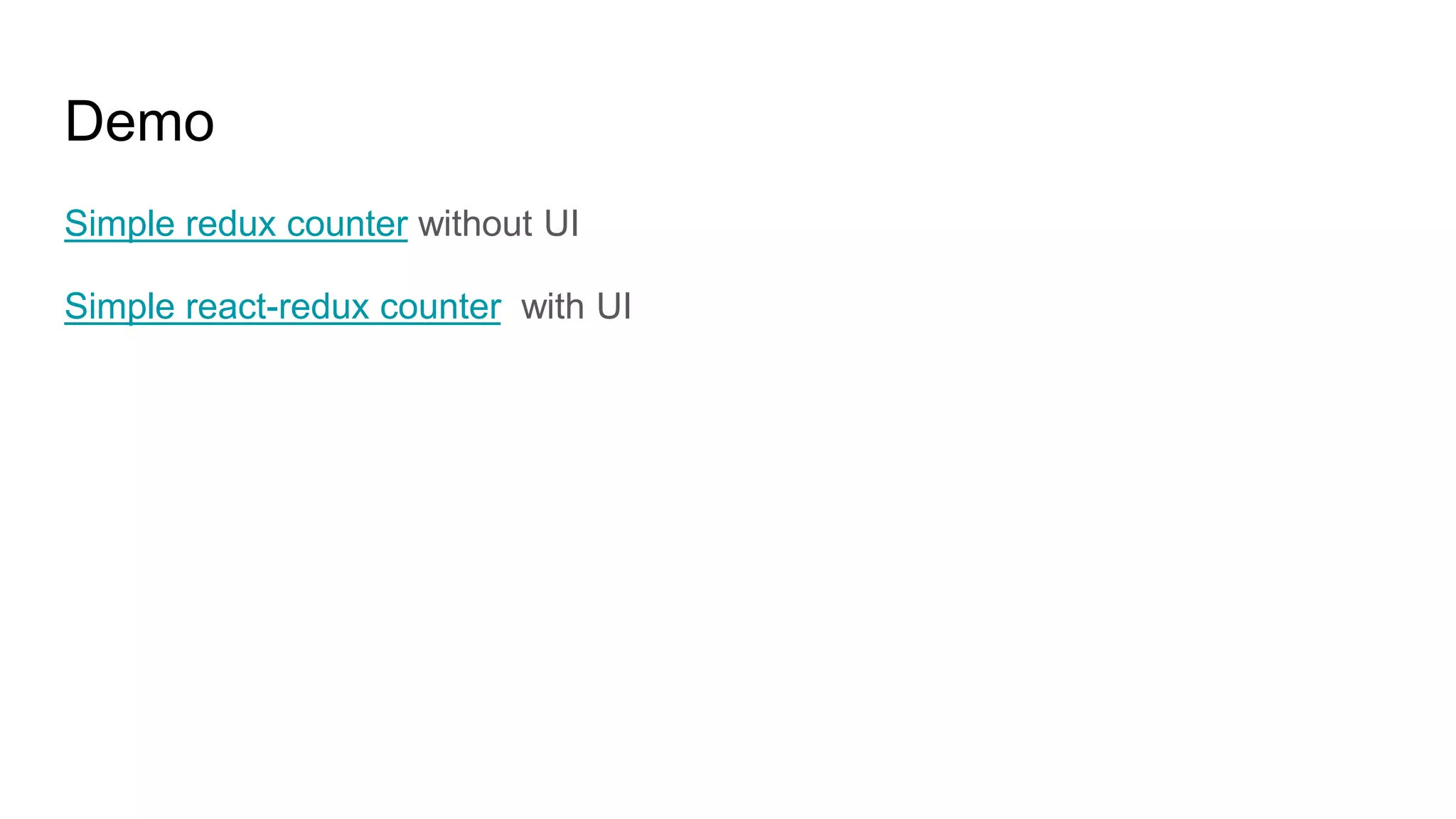
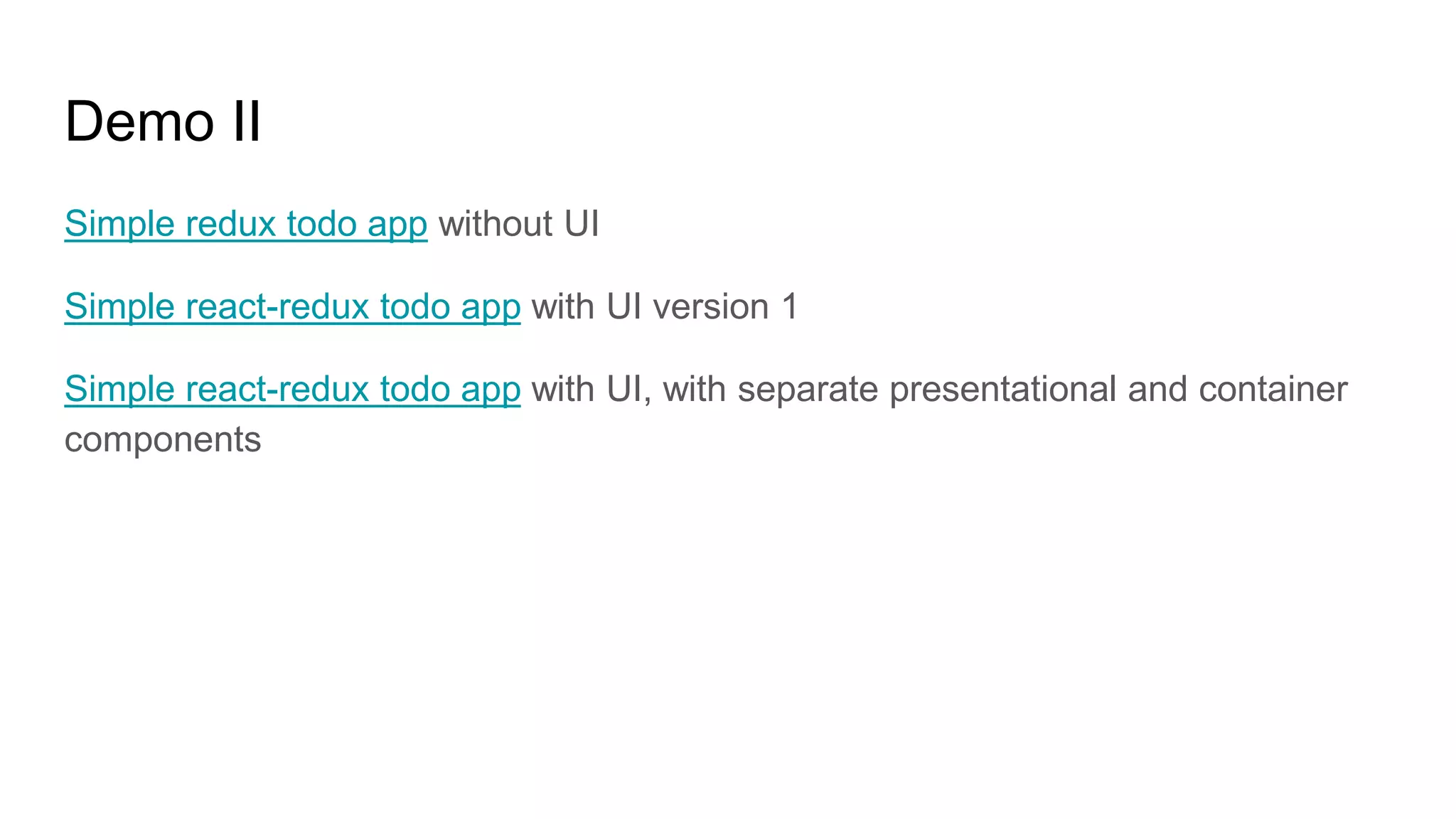
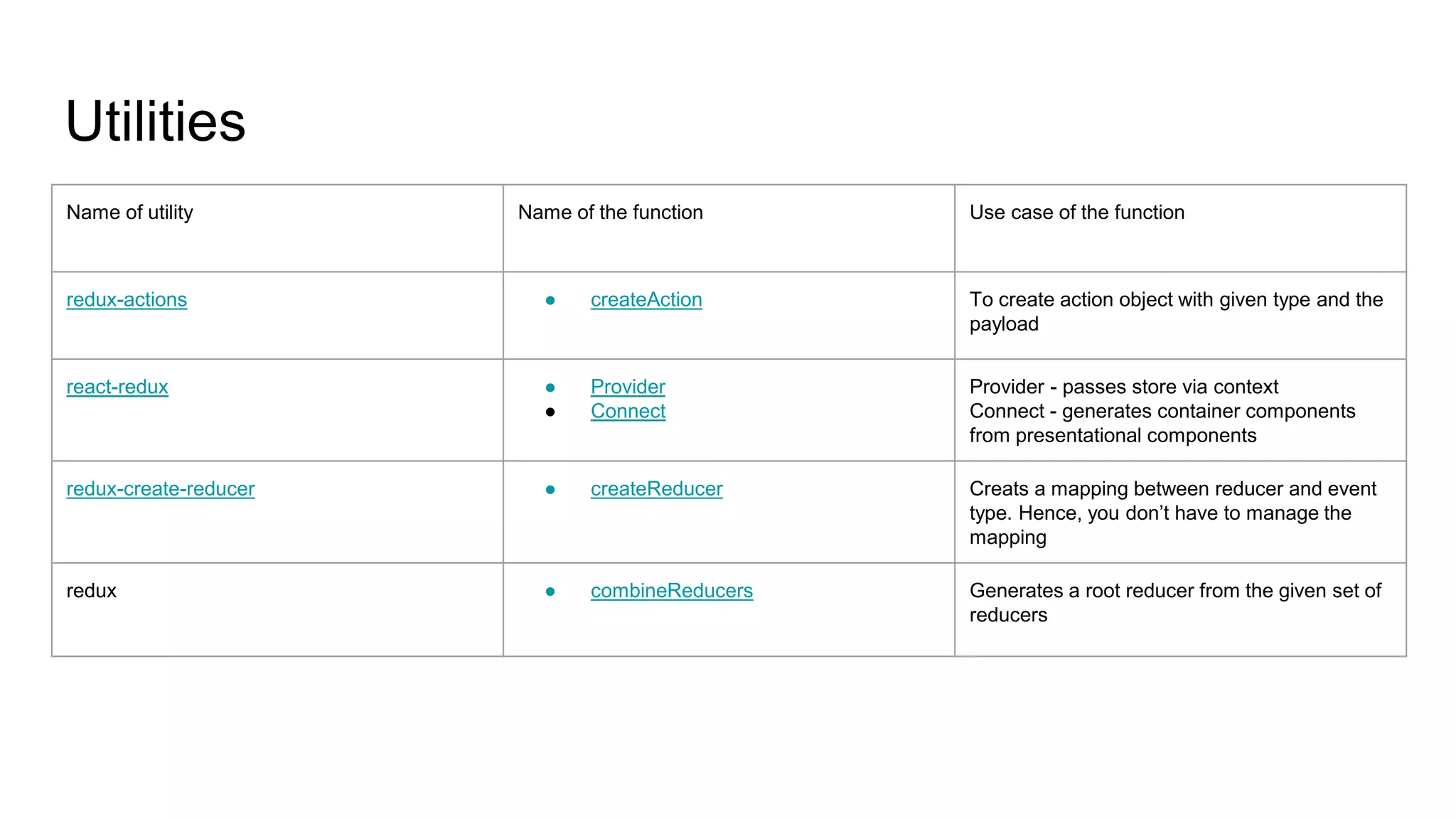
![Learning resources
● ReduxJS
● [video] Getting started with redux
● [video] React with redux](https://image.slidesharecdn.com/reduxjs-160729051924/75/Getting-started-with-Redux-js-23-2048.jpg)